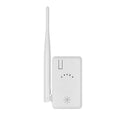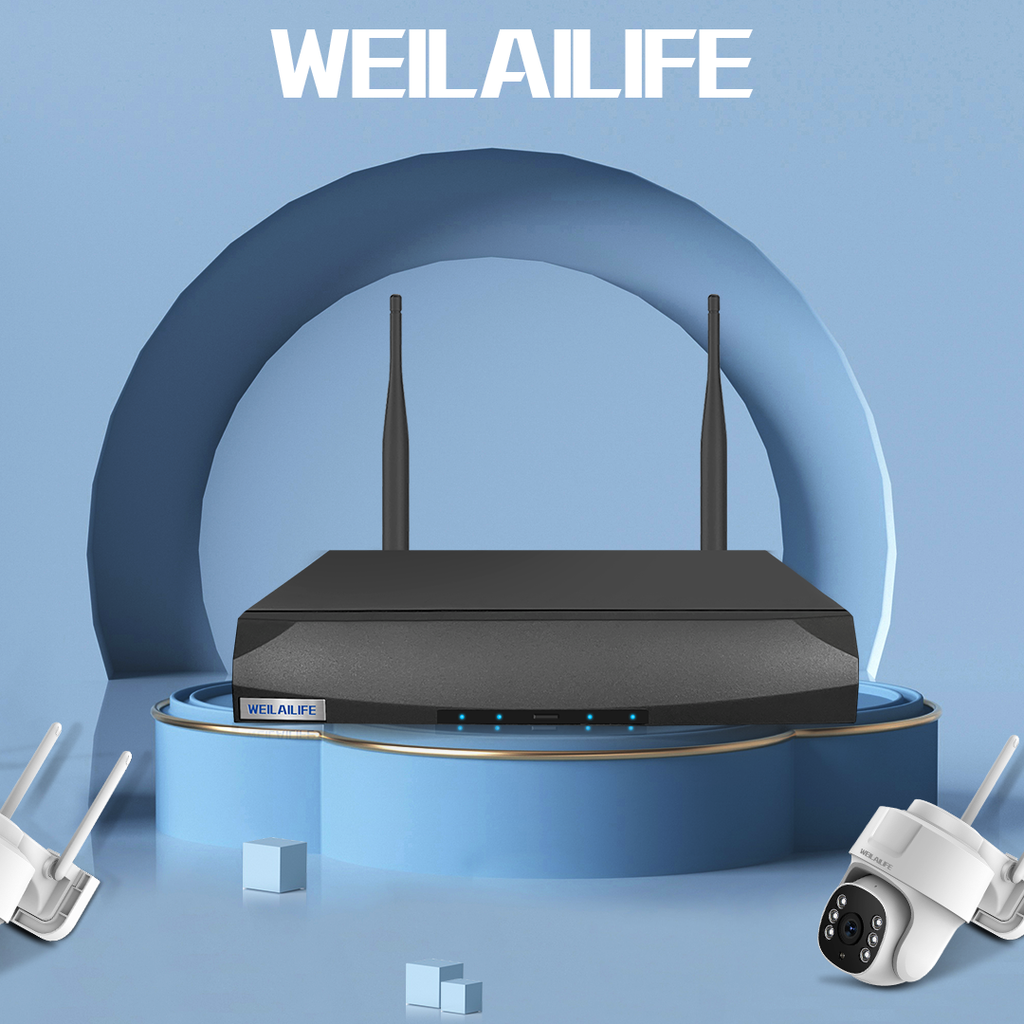In the name of WEILAILIFE brand, we will present an informative article on the various methods of connecting cameras to switches.
With the increasing demand for security surveillance in different sectors like enterprises, commercial establishments, agriculture, and residential use, different types of switches offer distinct networking options, including varied costs. Today, we will share several common methods of connecting cameras to switches.
Regular Switch:
A regular switch without power supply capabilities, as shown in the diagram, can only transmit data when connected to cameras. For power supply, an additional power source and cable are required. The advantage of this type of switch is its affordability, but the drawback is the need for an external power source, which limits the placement of cameras and increases overall costs due to cabling and power installation.
Standard PoE Switch:
Standard PoE switches can provide both power and data transmission to cameras, making them secure and convenient. There are two connection methods for standard PoE switches:
Method 1: Connect cameras that support PoE directly to the switch using a single Ethernet cable. No additional power source is needed, ensuring a hassle-free setup.
Method 2: For cameras that do not support PoE, a separate splitter is used between the switch and the camera. The splitter separates the data and power signals, providing safe power supply to the camera while ensuring proper data transmission.
Non-Standard PoE Switch:
Non-standard PoE switches lack the capability to identify whether connected devices support PoE. As a result, they immediately supply power upon connection, posing a risk of damaging devices. To mitigate this risk, non-standard PoE switches typically use a splitter to provide safe power to the camera while separating data transmission.
Alternatively, some non-standard PoE switches can handle 24V power supply to certain compatible devices. However, this approach lacks safety assurance, and it is essential to be cautious when dealing with such non-standard equipment.
15V Non-Standard PoE Switch:
The last method involves using a 15V non-standard PoE switch, such as the Leike 108SPE non-standard PoE switch. In this case, a splitter is also used to provide power and data transmission. However, the power supplied by the splitter is not regulated, resulting in a lower voltage, typically around 12V at the camera end. This voltage is still safe for the camera's operation.
Regarding the splitter, it separates data and power signals and delivers them to non-PoE compatible devices. In wireless networking and surveillance projects, different switch types are chosen based on usage scenarios and cost considerations, with the splitter serving as an essential companion for non-PoE devices.
However, for the best combination of safety, ease of use, and overall cost-effectiveness, standard PoE switches remain the preferred choice for networking in surveillance applications.
By understanding these common methods, businesses and individuals can make informed decisions when setting up their security camera systems, ensuring efficient and reliable monitoring solutions for various applications.
Regular Switch:
A regular switch without power supply capabilities, as shown in the diagram, can only transmit data when connected to cameras. For power supply, an additional power source and cable are required. The advantage of this type of switch is its affordability, but the drawback is the need for an external power source, which limits the placement of cameras and increases overall costs due to cabling and power installation.
Standard PoE Switch:
Standard PoE switches can provide both power and data transmission to cameras, making them secure and convenient. There are two connection methods for standard PoE switches:
Method 1: Connect cameras that support PoE directly to the switch using a single Ethernet cable. No additional power source is needed, ensuring a hassle-free setup.
Method 2: For cameras that do not support PoE, a separate splitter is used between the switch and the camera. The splitter separates the data and power signals, providing safe power supply to the camera while ensuring proper data transmission.
Non-Standard PoE Switch:
Non-standard PoE switches lack the capability to identify whether connected devices support PoE. As a result, they immediately supply power upon connection, posing a risk of damaging devices. To mitigate this risk, non-standard PoE switches typically use a splitter to provide safe power to the camera while separating data transmission.
Alternatively, some non-standard PoE switches can handle 24V power supply to certain compatible devices. However, this approach lacks safety assurance, and it is essential to be cautious when dealing with such non-standard equipment.
15V Non-Standard PoE Switch:
The last method involves using a 15V non-standard PoE switch, such as the Leike 108SPE non-standard PoE switch. In this case, a splitter is also used to provide power and data transmission. However, the power supplied by the splitter is not regulated, resulting in a lower voltage, typically around 12V at the camera end. This voltage is still safe for the camera's operation.
Regarding the splitter, it separates data and power signals and delivers them to non-PoE compatible devices. In wireless networking and surveillance projects, different switch types are chosen based on usage scenarios and cost considerations, with the splitter serving as an essential companion for non-PoE devices.
However, for the best combination of safety, ease of use, and overall cost-effectiveness, standard PoE switches remain the preferred choice for networking in surveillance applications.
By understanding these common methods, businesses and individuals can make informed decisions when setting up their security camera systems, ensuring efficient and reliable monitoring solutions for various applications.
Sample Block Quote
Nam tempus turpis at metus scelerisque placerat nulla deumantos sollicitudin delos felis. Pellentesque diam dolor an elementum et lobortis at mollis ut risus. Curabitur semper sagittis mino de condimentum.
Sample Paragraph Text
Lorem ipsum dolor sit amet, consectetur adipiscing elit. Morbi ut blandit risus. Donec mollis nec tellus et rutrum. Orci varius natoque de penatibus et magnis dis parturient montes, nascetur ridiculus mus. Ut consequat quam a purus faucibus scelerisque. Mauris ac dui ante. Pellentesque congue porttitor tempus. Donec sodales dapibus urna sed dictum.









